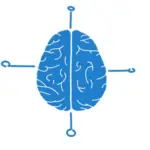When we talk about science and research, we cannot refer merely to the ways of knowing or discovering the world ; It is also the putting into practice of a specific way of thinking. Through science, people try to approach and understand the complexity of everything that surrounds us. In a world where knowledge is so vast, uncontrollable and constantly expanding, the need arises to find effective ways to organize and understand it.
Understanding and generating ways to organize knowledge can be challenging, but conceptual models exist to visualize such structures, such as the Knowledge Tree System. This works as a visual and conceptual representation that helps us organize and classify ideas and theories along four levels that range from the most basic foundations to the most abstract and complex concepts to explain the human mind.
In this article, we are going to explore the way the Knowledge Tree System is structured, examining the eight levels that it proposes and analyzing their applications in different fields of knowledge Being important to always take a critical approach, we will address the criticisms and debates generated around this knowledge organization system.
What is the Tree of Knowledge System?
To begin by understanding the most basic of the Tree of Knowledge System, it is important to address the meaning of its name. This is based on the metaphor of a tree, representing the structure and organization of human knowledge Just as a tree has roots, trunk and branches, knowledge can also be organized at different levels according to its complexity and specialization.
The main characteristic of the Tree of Knowledge System is its ability to explain the human mind in relation to real facts; It defines the person in relation to the knowledge they have, thus giving the starting point to solve the fundamental problem of Psychology. Next, we will break down each of these levels to understand them:
1. The matter
The most fundamental level of this tree, what we would consider the roots, represents those most basic concepts and principles that are fundamental to support the entire consequent edifice of knowledge It refers to matter because it is the initial form of “life” or existence, referring to the Big Bang.
The main origin of this level could be the discovery of gravity, in itself making a general reference to the physical and mathematical sciences and logic. Ultimately, this level is made up of all the disciplines that establish the foundations on which the rest of the derived structures in the Tree of Knowledge are built. This is the level that gives rise to knowledge, which will later be understood in a certain way by each person.
2. Life
The second level, life, refers to the evolution of species and the generation of human knowledge. Relating it to a specific discipline, this level would make a direct reference to the biological sciences. Encompassed in levels of knowledge, we could say that this is a level of passage between “matter” and “mind.” ; Without the existence of life, there is no room for a mind that processes matter and generates consequent knowledge. Biological sciences try to explain the functioning of the human body and biological structures; everything that has life.
3. The mind
This third level is the most relevant for the perspective of Psychology. As we have been commenting, the Tree of Knowledge System tries to explain the mind in relation to matter; seeks to understand the different ways in which each person processes and generates knowledge.
So, The level of the mind in relation to knowledge originates with Behavioral Theories , by authors such as Pavlov or Skinner. Therefore, the discipline that is mostly related to this level of knowledge is Psychology; It is what tries to know and explain the functioning of the human mind based on the individual and collective experiences that each person faces.
4. Culture
Culture is the last level of the Tree of Knowledge System, referring to the way in which cultures are generated through the grouping of human mentalities and thought orientations subsequent to the previous level. Therefore, the knowledge or discipline included in this level would be the Social Sciences as a whole.
These are those that try to explain great human movements, abandoning individualistic perspectives or perspectives focused on knowing the functioning of each mind separately. According to the Tree of Knowledge System, From this last level and as an interconnection of all the previous ones and the disciplines associated with them, Science is generated as a global whole

Applications of the Tree of Knowledge System
The Knowledge Tree System is used in multiple practical applications in various fields of knowledge, in accordance with the heterogeneity of the knowledge that it encompasses. Its hierarchical structure and its ability to show connections between different disciplines make it a valuable tool for the understanding and study of human knowledge. Below, we discuss some of its main applications:
1. Educational field
In the educational field, the Tree of Knowledge System can be useful to help students visualize the relationship between different subjects and disciplines, and understand the role of each individual person and societies in the generation and assumption of knowledge.
By understanding each concept and interrelationship of knowledge, students can have a more integrated and meaningful vision of what they learn training in an interdisciplinary approach and promoting deep understanding instead of fragmented learning.
2. Scientific field
For science, this system allows researchers the ability to contextualize their studies and understand how their work relates to other branches of knowledge. For example, a scientist working in neuroscience can use this system to understand how her research can link to biology, psychology, and medicine. This panoramic vision encourages collaboration between different disciplines and can contribute to more significant and interdisciplinary scientific advances.
3. Business environment
Focused on companies and work, this system can be a useful tool to identify opportunities to develop new ideas or products. Understanding the areas of knowledge that are on the periphery of a given field, it is possible to find unexpected connections and generate innovative solutions This approach can foster creativity and help companies find new ways to address problems and improve their products or services.
Criticisms and limitations of the Tree of Knowledge System
Although the Knowledge Tree System provides a useful vision and structure for organizing knowledge, this does not leave it exempt from criticism and debate. Some argue that this is an oversimplifying representation of the complexity of human knowledge, limiting our understanding of the interrelationships between disciplines.
Despite the criticism, it is important to recognize that this system is a very valuable tool to facilitate the understanding and organization of human knowledge Like any scientific structure, there may be limitations and challenges, but it is by considering these criticisms that science is advanced.
The debate around the Knowledge Tree System encourages us to reflect on the way in which we represent and understand knowledge, invites us to consider complementary approaches and promote more integrative visions. Some of the main criticisms are:
1. It perpetuates the division of knowledge
One of the most common criticisms is that this system perpetuates the division and fragmentation of knowledge into watertight compartments. Although many people see this as an open door to interdisciplinarity, others think that categorizing knowledge into separate levels and branches creates walls between each discipline, complicating their interconnection. These critics maintain that more transversal and multidisciplinary approaches should be generated.
2. Ignores the dynamism and evolution of knowledge
Another of the great criticisms focuses on considering knowledge as constantly dynamic and evolving. This is not static, it is constantly changing and developing, and these critics argue that a system like this does not adequately take into account this dynamic and constantly evolving aspect. Critics argue for the need to adopt more flexible and adaptive representations of knowledge, so that they better reflect its changing nature

Conclusions
In conclusion, the Tree of Knowledge System provides a powerful visual and conceptual representation for understanding and organizing the wide world of human knowledge. Through these four levels and a hierarchical structure, this system invites us to explore connections and relationships between different disciplines, giving us a more comprehensive and holistic vision of them.
The criticisms and debates surrounding this system are relevant to recognize its usefulness as a tool for guidance and understanding and to establish the foundations to understand the way in which various branches of knowledge are intertwined. The Tree of Knowledge System invites us to explore and appreciate the diversity of human knowledge to understand its underlying unity and look for connections and synergies between different disciplines.









